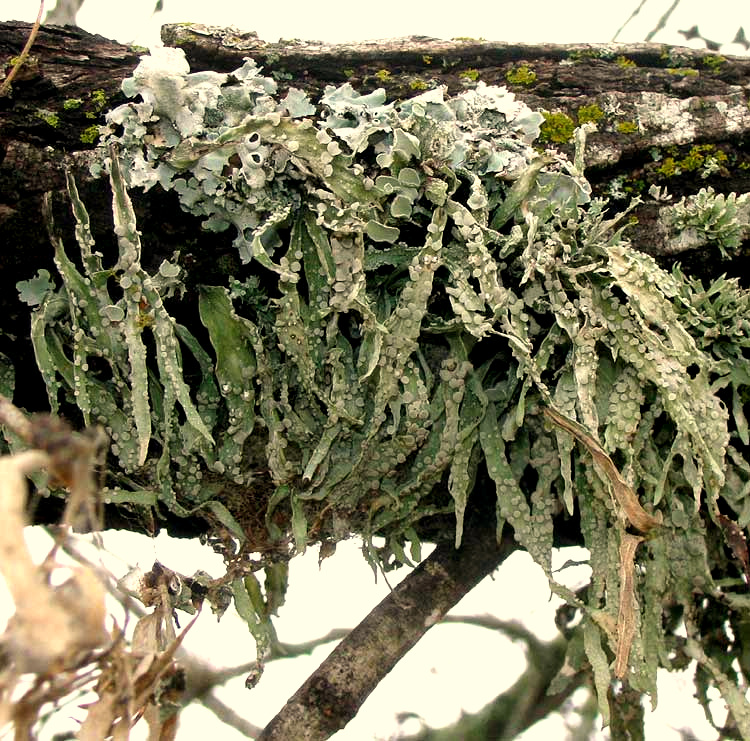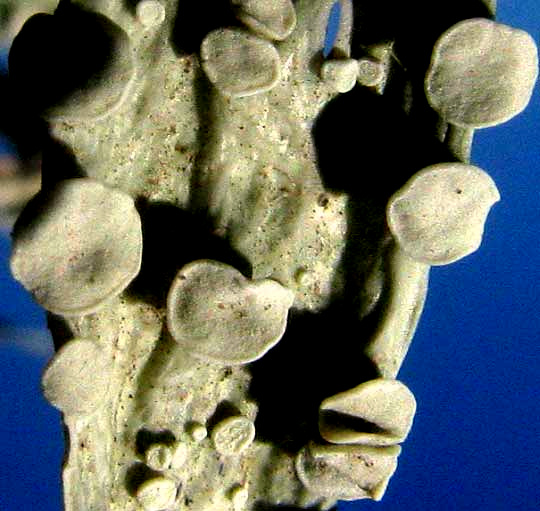Excerpts from Jim Conrad's
Naturalist Newsletter

from the January 13, 2013 Newsletter issued from the valley of the Dry Frio River in northern Uvalde County, southwestern Texas, on the southern border of the Edwards Plateau; elevation ~1750m (~5750 ft); N29.62°, W99.86°; USA
CARTILAGE LICHEN
An eye catching, unusually large, fruticose lichen commonly seen in our area dangling from fairly thick tree limbs is shown above. Actually, several lichen species appear in that photo. The one we're looking at now displays numerous, vertically hanging, slender, three-inch-long (8cm) blades. The blades bear many mushroom-shaped growths on their outward-facing surfaces. A close-up of some of these stalked items appears below:

To get a fix on what those mushroom-shaped growths are, remember that lichens are composite organisms comprising two, or maybe even three, completely different kinds of organisms. Every lichen is part fungus. Usually the other species it's made of is a photosynthesizing alga, but sometimes it can be a photosynthesizing bacterium known as a cyanobacterium. In this mutualistic relationship the alga or cyanobacterium photosynthesizes, thus producing food for the lichen body, while the fungus mainly provides the lichen with a distinctive form and a reproductive system. The fungus produces fungal spores that must land next to an appropriate alga or cyanobacterium, germinate and wrap its hyphae around it. As the lichen grows, the fungus produces more mycelium and the alga or cyanobacterium keeps pace reproducing itself.
So, the mushroom-shaped growths are apothecia, which are the reproductive structures of fungi belonging to a certain fungus phylum, the Ascomycota. Across each apothecium's top there are jillions of microscopic, sac-like structures called asci (singular ascus). In this species eight spores are reproduced in each ascus. You can see our diagram of a typical apothecium with its asci at https://www.backyardnature.net/f/funclass.htm#a.
Sometimes the lichen in our photo is known by the name of Cartilage Lichen. It's RAMALINA CELASTRI, and it's widely distributed in tropical and cool temperate regions in the Southern Hemisphere as well as southern North America and Central America. The genus Ramalina contains over 240 species. You might enjoy admiring variations on a Ramalina theme at the Ramalina of North America page.
A compound called parietin has been isolated from Ramalina celastri and demonstrated antiviral activity against certain arena viruses.